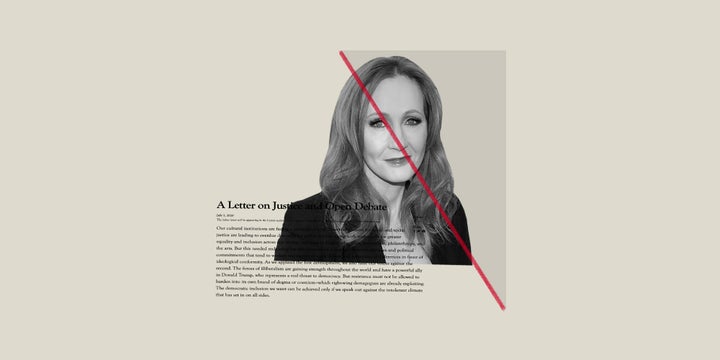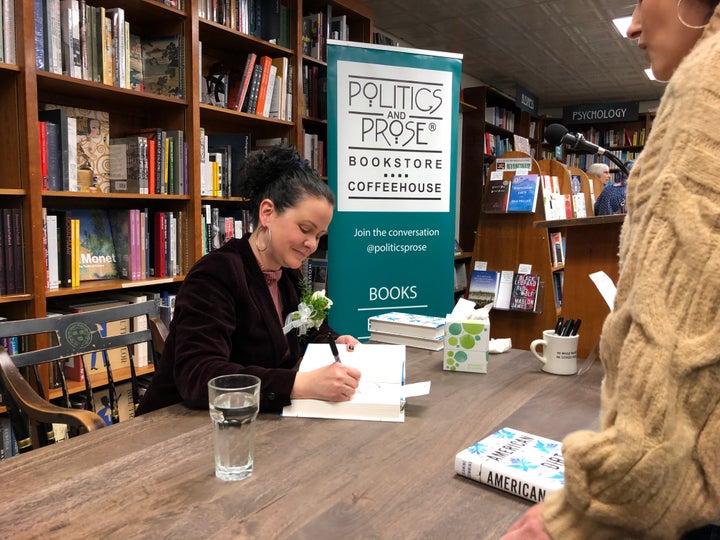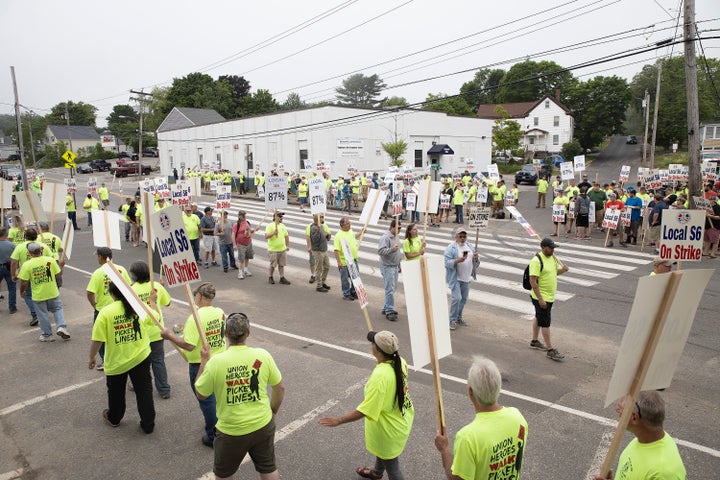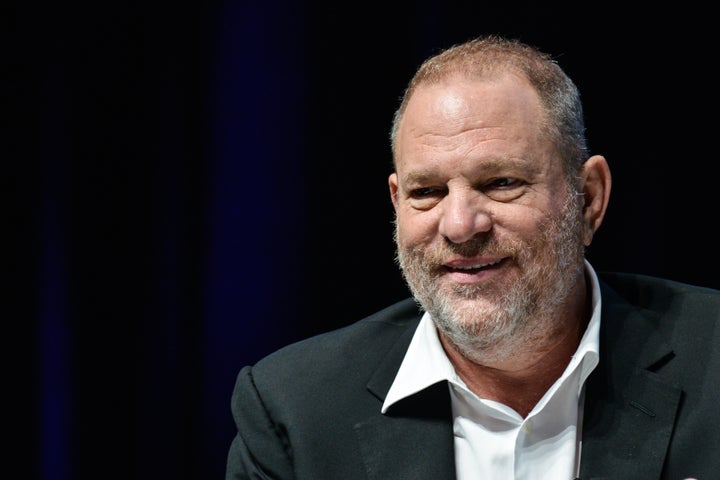
On Monday, 153 prominent writers, academics and public figures signed their names to a statement entitled “A Letter on Justice and Open Debate.” According to the signatories, “The free exchange of information and ideas, the lifeblood of a liberal society, is daily becoming more constricted.”
While the letter itself, published by the magazine Harper’s, doesn’t use the term, the statement represents a bleak apogee in the yearslong, increasingly contentious debate over “cancel culture.” The American left, we are told, is imposing an Orwellian set of restrictions on which views can be expressed in public. Institutions at every level are supposedly gripped by fears of social media mobs and dire professional consequences if their members express so much as a single statement of wrongthink.
This is false. Every statement of fact in the Harper’s letter is either wildly exaggerated or plainly untrue. More broadly, the controversy over “cancel culture” is a straightforward moral panic. While there are indeed real cases of ordinary Americans plucked from obscurity and harassed into unemployment, this rare, isolated phenomenon is being blown up far beyond its importance.
The panic over “cancel culture” is, at its core, a reactionary backlash. Conservative elites, threatened by changing social norms and an accelerating generational handover, are attempting to amplify their feelings of aggrievement into a national crisis. The Harper’s statement, like nearly everything else written on this subject, could have been more efficiently summarized in four words: “Get Off My Lawn.”
What Are We Actually Talking About Here?
The first question to ask when determining whether you’re falling for a moral panic is whether it’s really a Thing. Societal freakouts over razor blades in Halloween candy, strangers in vans kidnapping kids, and teenagers hosting “rainbow parties” turned out, in hindsight, to be based on tiny numbers of confirmed cases — or none at all.
“Cancel culture” has the same characteristics as previous episodes of pearl-clutchery. Nearly every example cited by the Harper’s letter turns out, upon scrutiny, to be something else entirely.
Take the letter’s ominous warning that “editors are fired for running controversial pieces.” This is almost certainly a reference to James Bennet, the opinion editor of The New York Times who resigned last month after printing an op-ed by Sen. Tom Cotton (R-Ark.) calling for the military suppression of Black Lives Matter protests.
While the op-ed did inspire widespread criticism, Bennet’s resignation is not a case of social-media censorship. The Times’ itself admitted that the piece “fell short of our standards” and represented a “breakdown” in the paper’s editorial process. Bennet eventually admitted that he hadn’t even read it before publishing it.
And beyond Bennet’s incompetence, there is the simple question of accountability. Even before the Cotton op-ed, Bennet hired climate change deniers, neglected fact-checking and printed “pro-mercenary” articles by private military contractors. Are the signatories to the Harper’s letter really saying that Times readers and employees should not have expressed their frustration with these obvious breaches of ethics?
Dozens of journalists, including several at the Times and HuffPost, made this point in a Friday response to the Harper’s letter spearheaded by journalists of color and co-signed by members of the academic and publishing communities.
The Harper’s letter also says, in its oblique way, that in today’s America, “professors are investigated for quoting works of literature in class.” This is, in a purely literal sense, true: Last month, a professor named W. Ajax Peris was investigated by UCLA for reading Martin Luther King Jr.’s “Letter From Birmingham Jail” aloud in class.
That’s not why Peris was investigated, though. He was investigated because he read excerpts of the letter containing the N-word without warning his students first. He also showed graphic footage of lynchings in his class without content warnings. When students complained, he insisted that he should be allowed to use the slur.
Even if you think the complaint against Peris was overly sensitive, he was not “canceled” in any meaningful sense. The UCLA investigation was resolved with a critical letter from his department head. He was not subject to widespread calls for termination and will be teaching classes in the fall.
In other words, Peris’ case was utterly routine. Students complain about their teachers for justifiable reasons and silly ones thousands of times per week in America. These complaints don’t just come from left-wing students: After the 2016 election, a professor at the College of Charleston was targeted by conservatives for dedicating a class to discussing Donald Trump’s victory. The far-right advocacy group Turning Point USA has a Professor Watchlist where Republican pupils can report professors who advance “leftist propaganda in the classroom.”
America is a big country. Sometimes employees disagree with the decisions of their bosses and sometimes 19-year-olds do things that adults disagree with. Simply because these cases happened does not mean that they are new or important.

Why Should I Care?
Another sure sign of a moral panic is the elevation of nonevents into national catastrophes. Again and again, the decriers of “cancel culture” intimate that if left unchecked, the left’s increasing intolerance for dissent will result in profound consequences.
And yet, most actual examples of “cancel culture” turn out to have cartoonishly low stakes. According to the Harper’s letter, left-wing intolerance has caused books to be “withdrawn for alleged inauthenticity.” This is likely a reference to “American Dirt,” a novel about the U.S.-Mexico border written by a white author. And yes, the book received widespread criticism when it was published in January. It was not, however, withdrawn by its publisher. It was, in fact, the No. 1 book in America for weeks on end. Even now, six months later, it is still in the top 10. Are we really supposed to believe that an author receiving negative reviews before selling millions of copies of her book is some sort of existential crisis for the left?
Other examples of “cancel culture” have the same pitiful stakes. In 2018, right-wing media exploded after the Association of Library Service to Children renamed its Laura Ingalls Wilder Award due to the author’s racial insensitivity. In June, “cancel culture” beat reporters fretted about a journalist being asked to apologize for sending insensitive tweets. And just last week, New York Magazine published a panicked story about a guy being removed from a group email list.
Given how many crises America finds itself in the middle of, I am reluctant to add award rebrandings and repentant social media posts to the list of things I should be worrying about. Seriously, an email list?

Who Is Being Harmed?
The third sign of a moral panic is when the same term is applied to cases with fundamental differences. Consider the following two examples of “cancel culture” run amok:
While they may look similar on the surface, these cases in fact have little in common.
First, the person being “canceled.” It makes no sense to apply the same standard to public figures and random citizens alike. Philip, unlike Shor, is a public figure. She is a bestselling author and is surely aware that her political statements will affect her standing among her target audience and her publisher. Let’s not be coy about this: Declaring support for J.K. Rowling in July of 2020 is a de facto statement that you agree with her controversial, unpopular views on transgender people.
Public figures certainly have a right to express their controversial views. Readers have the right to react accordingly, and publishers have the right to take these views into account when deciding which books to publish. That’s why it’s called, as “cancel culture” critics love to point out, the “marketplace of ideas.”
So far, there is no indication that private citizens are being held to the same standard as bestselling authors. Philip’s statement in support of Rowling received thousands of supportive replies. This did not trigger a wave of mass firings. The fact is, it remains wildly acceptable for private citizens to state transphobic views. Public figures are held to a different standard, but there is nothing new or troubling about this.
Second, these cases differ in who is doing the “canceling.” Shor, unlike Philip, was never targeted on social media. Last month, he sent a tweet summarizing the findings of an academic paper arguing that race riots in 1968 may have tipped the election to Nixon. He clearly meant the tweet as an argument against the looting taking place during the George Floyd protests “Helping Trump get re-elected is not going to lead to better behavior by cops,” he tweeted following his original post.
While he was indeed criticized for his view, the disagreement was limited and relatively civilized. Much of the pushback came from fellow researchers who believed he had misrepresented the study. A single person tagged his boss at Civis Analytics, the polling firm that employed Shor. A few days later, he was fired. (I should note here that neither Civis nor Shor have confirmed that he was fired for the tweets, something “cancel culture” critics seem weirdly intent on ignoring.)
Shor’s case is not that of a random person being targeted by a hate mob. It is that of a professional pollster using his expertise to advance an argument about current events and then being punished by his employer. It’s not good, obviously, but calling it “cancel culture” performs exactly the same collapse of complexity the Harper’s letter signatories accuse their critics of doing.
If “cancel culture” is a term that encompasses both the famous and the nonfamous, social media mobs and risk-averse employers, firings and consumer boycotts, then it means nothing at all. It is, like “political correctness” before it, simply a name people give to things they do not like.

What’s The Solution?
This where we finally get to the parts of the Harper’s letter I agree with. There really are cases of ordinary people losing their jobs after being targeted by social media mobs. Majdi Wadi, the owner of a Minneapolis catering company, was evicted from one of his store locations after racist social media posts from one of his employees (his daughter) surfaced online. Emmanuel Cafferty, a San Diego Gas & Electric company employee, was fired after being falsely accused of making a white supremacist hand gesture.
These cases are indefensible. If the Harper’s statement had limited itself to cases in which social media users unjustly target random citizens for firing, I would agree with it. Hell, I probably would have signed it.
But is the argument of the Harper’s signatories simply that people should not participate in unjust social media mobs? Well, duh. Outside of the darkest corners of the internet, it would be nearly impossible to find anyone who disagrees with that statement.
Plus, if the real issue here is online harassment and abuse, it makes no sense to limit the critique to the left. Some of the most prominent social media firing squads have originated on the right. In 2018, film director James Gunn was removed from “Guardians of the Galaxy 3” after right-wing trolls unearthed insensitive tweets and spammed his studio (Gunn was later reinstated). Numerous journalists — disproportionately female and nonwhite — have been hounded by social media hate mobs. Ijeoma Oluo, the author of “So You Want to Talk About Race,” was the target of an attempt to send a SWAT team to her home.
And while it’s true that J.K. Rowling and other prominent figures have received death threats for expressing “gender critical” — i.e. transphobic — views, trans people who have challenged those views have received death threats too. The unfortunate reality of the internet is that there is enough harassment to go around.
If the signatories of the Harper’s letter were concerned about larger issues of online abuse, death threats and doxxing, they could have proposed solutions to these problems. And they would have been right: Social media platforms could do more to prevent harassment. Police departments and other government agencies should also take these threats more seriously.
Similarly, if “cancel culture” is really about ordinary people being fired after being targeted by social media mobs, the solutions are clear. The vast majority of American employment is “at will,” meaning companies can fire their workers for any reason and at any time. A great way to fix this problem would be to advocate for stronger unions and better employment protections.
But the moral panic over “cancel culture” isn’t about workers losing their jobs or ordinary people facing online abuse. Almost every example included in the Harper’s letter involves powerful people — editors, authors, journalists, “heads of organizations” — being criticized from below.
This is telling. Like most “cancel culture” punditry, the Harper’s letter is not aimed at actors with institutional power. It is almost exclusively directed at the ordinary people who point out the failures of those institutions.

Cries Of ‘Cancel Culture’ Are A Tantrum By The Powerful
If I sound like I have a chip on my shoulder about this, that’s because I do. For the last two years, I have co-hosted a podcast, “You’re Wrong About,” that investigates misremembered historical events. From the McDonald’s hot coffee case to the Terri Schiavo controversy to Janet Jackson’s 2004 Super Bowl halftime show, many of the public’s misperceptions originate with the tiny number of media gatekeepers who traditionally decided which opinions were worthy of airing and which weren’t.
The most stark example of this is the “Ebonics” controversy. In 1996, the Oakland, California, school board released a resolution stating that it was going to recognize the language used by its Black students — now known as African American English but then known as “Ebonics” — as a legitimate form of expression. For years, academic research had demonstrated that African American English followed defined grammatical rules. Furthermore, studies from across the country had found that teaching Black children by contrasting their own language with what’s known as standard English was a more efficient way to teach reading and writing.
The country lost its mind. States started passing laws banning their own schools from recognizing Ebonics. Congress hauled Oakland administrators to Washington for a public hearing. Op-ed columnists claimed that Oakland teachers were going to start teaching white kids Ebonics instead of standard English. TV anchors said the district had given up on teaching Black kids the language skills they needed for college admissions tests and job interviews.
None of it was true, but it didn’t matter. The more complex story about Oakland was outside the realm of acceptable debate. The New York Times ran a prominent ad featuring a photo of Martin Luther King Jr. overlaid with the text “I Has a Dream.” It later emerged that the publisher had given away the page space for free. Meanwhile, when a group of linguists and experts wrote an open letter contextualizing the Oakland resolution and arguing for the validity of African American English, the Times refused to run it.
I spent hours on LexisNexis looking for any defense of the Oakland school board. The closest thing I could find was a New York Times op-ed (with the atrocious headline “The Ebonic Plague”) that said simply that the administrators shouldn’t have received quite so much abuse over a single resolution. No one even tried to defend what the district was doing.
The Ebonics controversy — not J.K. Rowling’s Twitter mentions — is what stifling debate really looks like. For decades, American media was controlled by a tiny number of gatekeepers. Count up all the top editors of all the national news outlets in the pre-internet era and you would have gotten a shockingly small number. If that tiny — and overwhelmingly white, male, straight and cis — group of editors decided that an opinion was not worthy of being heard, it wasn’t.
The moral panic over “cancel culture” feels like a backlash by those editors. Since the early 2000s, we have slowly shifted from a media environment defined by a small group of gatekeepers to one with no gatekeepers at all. Thanks to social media and platforms like Medium, anyone can publish anything now. Every conceivable viewpoint is being expressed somewhere, right this minute.
The actual debate over free speech is about how to decide which of those views deserve space and attention. Outlets like The New York Times and Harper’s bestow credibility on the opinions they publish. Their employees and their readers have the right to argue that some views do not deserve such credibility. That is not the suppression of free speech; it is the exercise of it.
Ultimately, the Harper’s letter represents a much larger problem than oversensitive college students or uber-woke employees: the failure of elite institutions to see through the bad faith of the far right.
For nearly a decade, conservative outlets have highlighted meaningless anecdotes to advance narratives about “campus political correctness gone wrong” and “free speech under attack.” Beyond absurd slippery-slope arguments, they have never provided any evidence that these issues are worthy of the nation’s attention.
“Cancel culture” is nothing more than the latest repackaging of the argument that the true threat to liberalism resides not in lawmakers or large corporations but in overly sensitive college students and random social media users. It is no more sophisticated than the “war on Christmas” and has the same goal: to imply that those pushing back against injustice are equivalent to the injustice itself.
Some of the signatories of the Harper’s letter know this and some of them don’t. All of them should have known better.
CORRECTION: This article initially misstated that a SWAT team was sent to Oluo’s home.
